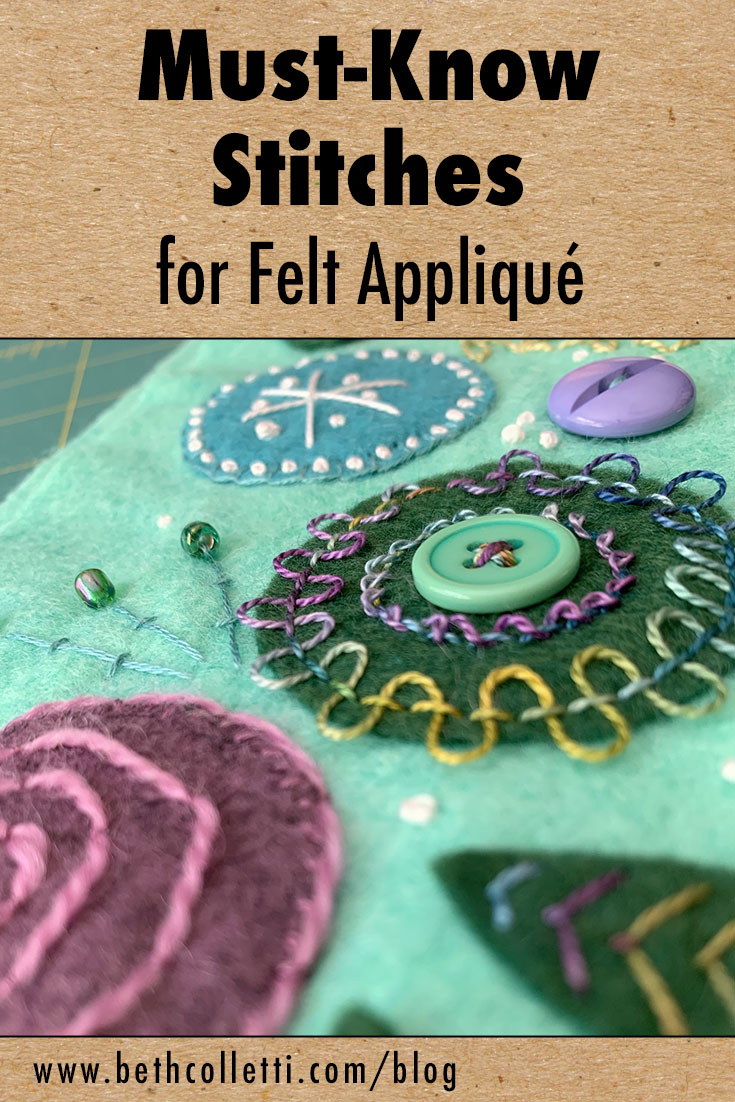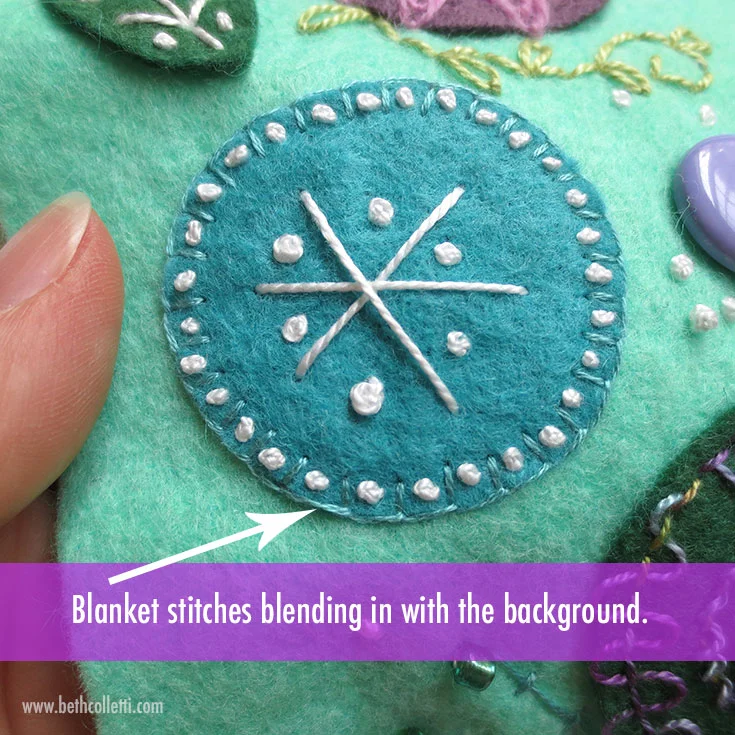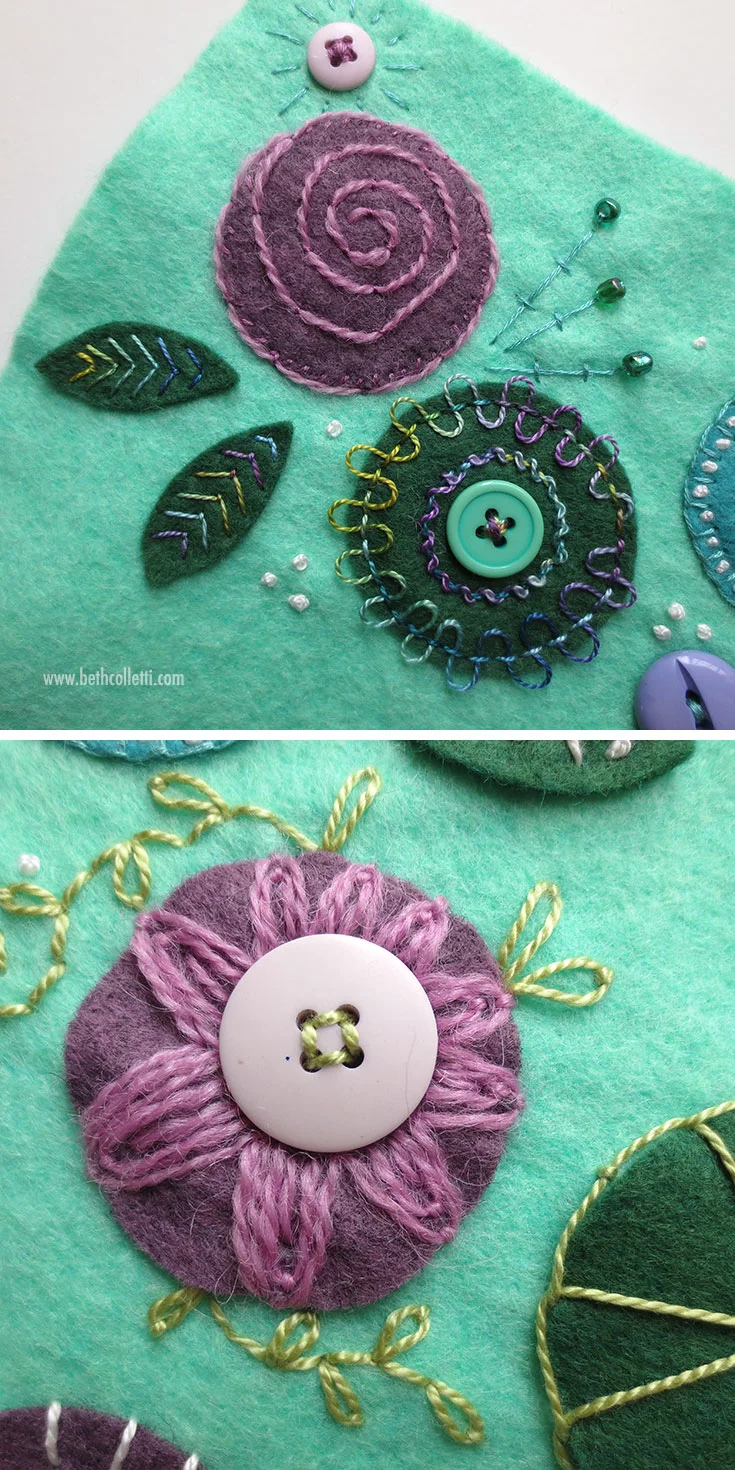When it comes to the art of appliqué, beginning with felt is a great way to learn and practice. Appliqué is simply attaching a small piece of fabric to a larger piece of fabric, usually to create a decorative bit of fiber art. Felt is a great fabric for appliqué work because you can cut it however you want and it won’t fray. This eliminates some additional steps that are needed when using other fabrics for appliqué. In fact, felt appliqué is so easy that if you’ve never tried it before, you’ll be amazed at how simple and accessible it is.
The two stitches that are used most often in felt appliqué are the whipstitch and the blanket stitch. These stitches are used primarily to attach one piece of felt to another.
Whipstitch
The whipstitch (sometimes called an overcast stitch) is a simple series of straight stitches that you work in the same direction, perpendicular to the edge of your felt shape. Often stitchers use thread that matches the color of the felt they are attaching so that the stitches blend in. But you can also choose to use a contrasting bit of thread for a more decorative stitch.
The whipstitch here blends in with the purple felt.
To see the whipstitch demonstrated, watch the video below.
Blanket Stitch
The blanket stitch looks like a series of right angles, or letter L’s that were turned on their heads. This stitch is worked around the edge of your felt shape, tacking it down to the background. Depending on the look you want, you can also use either a matching color of thread, or a contrasting color.
The blanket stitch here blends in with the blue felt.
To see the blanket stitch demonstrated, watch the videos below.
Whipstitch versus Blanket Stitch in Felt Appliqué
While the whipstitch and blanket stitch are used most often in felt appliqué when attaching felt shapes to the background felt, there is no limit to the type of stitches you can use. In fact, if you have knowledge of hand embroidery stitches, you can use an unlimited number of them in your appliqué work. Stitches such as the back stitch, running stitch, stem stitch, lazy daisy stitch, cross stitch and many, many more can be used not only decoratively, but to attach your felt shape to its background. It all depends on the look you are going for and how creative you want to be!
Felt pieces attached using the whipstitch, blanket stitch, back stitch, fly stitches, buttons and more.





